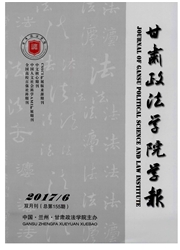

 中文摘要:
中文摘要:
环境风险管理要求在风险尚未发生或环境利用行为所致的风险尚不确定的情形下就要做出相应的管理决策,以维护生态系统健康和生态安全。既有的成本效益及预警原则的管理思维虽然在环境风险管理决策中各有优势,但两种思维适用中因为缺少有效的诱因(市场化的手段)而带来管理上的困境。基于此,依据环境开发利用行为所致的环境风险不确定性的程度以及国土空间规划的理论,构建"绿色发展区""红色禁止区"及"黄色警戒区"来重置各种管理思维模式以应对环境风险不确定性问题,尤其在"黄色警戒区域"的管理上,连接污染者付费原则与预警原则的"预警污染付费原则"的适用是较佳回应。
 英文摘要:
英文摘要:
In order to maintain the well-functioning ecosystem and ecological security,management of environmental risks required that appropriate management decisions need to be made in condition that the risks has not yet occurred or the risks caused by environmental exploitative behaviors are uncertain. Although principles of cost-benefit and precaution as two management philosophies have their own advantages in the management of environmental risks,management dilemma still exit because of lack of effective incentives(market-oriented means) while applying these two managerial methods. Accordingly,based on the extent of uncertainty of risks caused by environmental exploitative behaviors and the theory of land spatial planning,a framework characterized by "green-development-zone", "red-forbidding-zone"and "yellow-alerting-zone"are put forward which combines different management philosophy so that uncertainty of environmental risk can be effectively managed. The principle of precautionary polluter-pay which derives from the connection between principles of polluter-pay and precaution is a more feasible means to response to the management of these uncertainties.
 同期刊论文项目
同期刊论文项目
 同项目期刊论文
同项目期刊论文
 期刊信息
期刊信息
